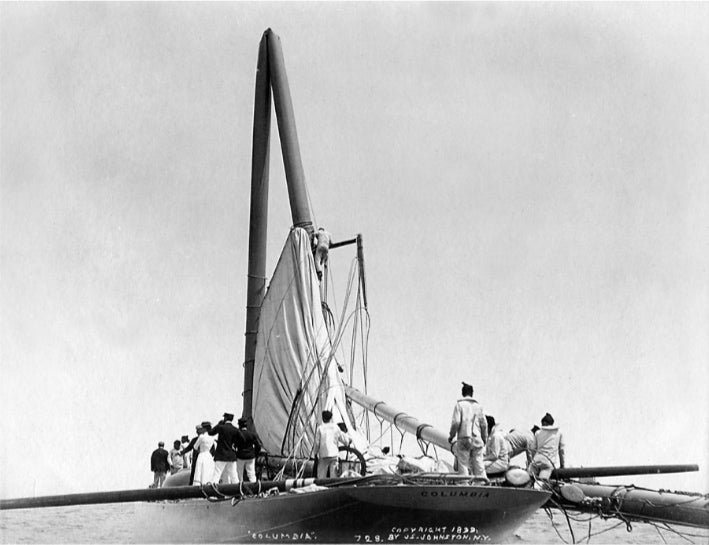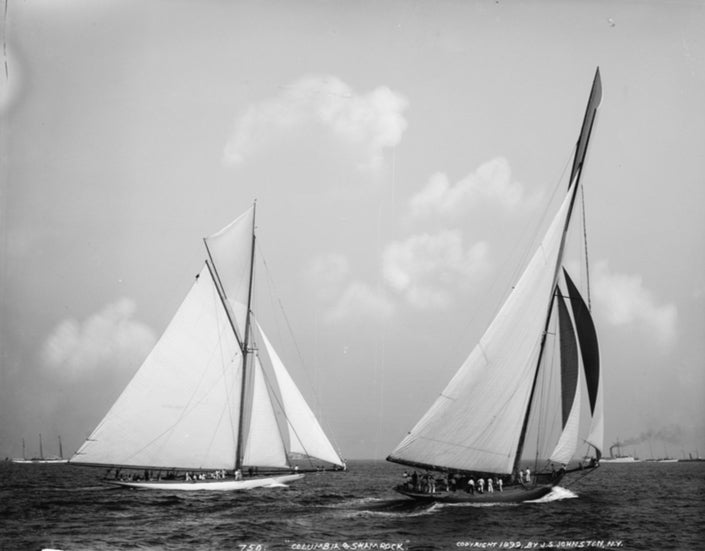ART MODERNE PAIR OF GEM-SET AND ROCK CRYSTAL BRACELETS BY CARTIER, PARIS, CIRCA 1940
ART MODERNE PAIR OF GEM-SET AND ROCK CRYSTAL BRACELETS BY CARTIER, PARIS, CIRCA 1940
SOLD: Acquired by the Newark Museum
A pair of bracelets designed with gold links topped with pyramid-shaped gemstones, one with lapis lazuli and the other with amethysts, set into mounts with cabochon accents of the same stone, joined by rock crystal rings; with French assay marks, mounted in 18-karat yellow gold
- Amethyst bracelet: 4 pyramid-shaped amethysts, 16 cabochon amethysts, 4 rock crystal rings
- Lapis lazuli bracelet: 4 pyramid-shaped lapis lazuli, 16 cabochon lapis lazuli, 4 rock crystal rings
- Each bracelet signed Cartier
- Length of each bracelet: 7 1/2 inches
Additional cataloguing
Provenance
- Hope Goddard Iselin (Mrs. Charles Oliver Iselin)
Biography
Cartier was founded in Paris in 1847 by Louis-François Cartier. His three grandsons, Louis, Pierre, and Jacques, built the house into a famous international jewelry empire serving royalty, Hollywood stars, and socialites. Cartier has created some of the most important jewelry and objects of art of the twentieth century with many iconic designs such as mystery clocks, Tutti Frutti jewelry and the Panthère line. In 1983, The Cartier Collection was established with the objective of acquiring important pieces that trace the firm’s artistic evolution. Today, Cartier has 200 stores in 125 countries.
Significance
By the early 1940s, jewelry had evolved into bold three-dimensional forms mixing gemstones with hardstones. This pair of bracelets typifies this style. They are designed with pyramid-shaped gemstones—one with lapis lazuli and the other with amethysts—an unusual gem cut not often seen in jewelry. However, Cartier, as the premier jewel salon for most of the twentieth century, would have understood the importance of these forms as a counterpoint to the hardstone circular rock crystal links joining the elements. The artfulness of this bracelet is also evident in the use of the geometrical shapes of squares and circles that are joined together by three-stepped gold links, each accented with the corresponding gemstone of either lapis lazuli or amethyst.
During the war years, gold was the preferred metal since platinum, a metal needed for the manufacture of armaments, was taken off the luxury market. Many of the traditional gems used in jewelry making were also no longer available. Japan controlled Indochina, Burma, and Thailand, and the stones that were available had to be shipped by a circuitous route to either New York or Paris. Idar-Oberstein, the German center for cutting gemstones, was shut down. A new market opened up during this time of deprivation, a market that was more than ready to fulfill the new demand. Brazil, where many German cutters had relocated during World War II, now became the supplier for many colored gemstones. Amethysts, rock crystal, and lapis lazuli became three of the most important gemstones during this period.
This bracelet was formerly in the collection of Hope Goddard Iselin, an avid horsewoman, golfer, and accomplished sailor. Her husband, C. Oliver Iselin, defended the America’s Cup four times and was a celebrated yachtsman at the turn of the century. But, it was Mrs. Iselin who defied odds, becoming the first woman to compete in the America’s Cup, which, at the time, caused controversy. Knowing her taste for adventure, it is appropriate that she would select striking jewelry from Cartier.









